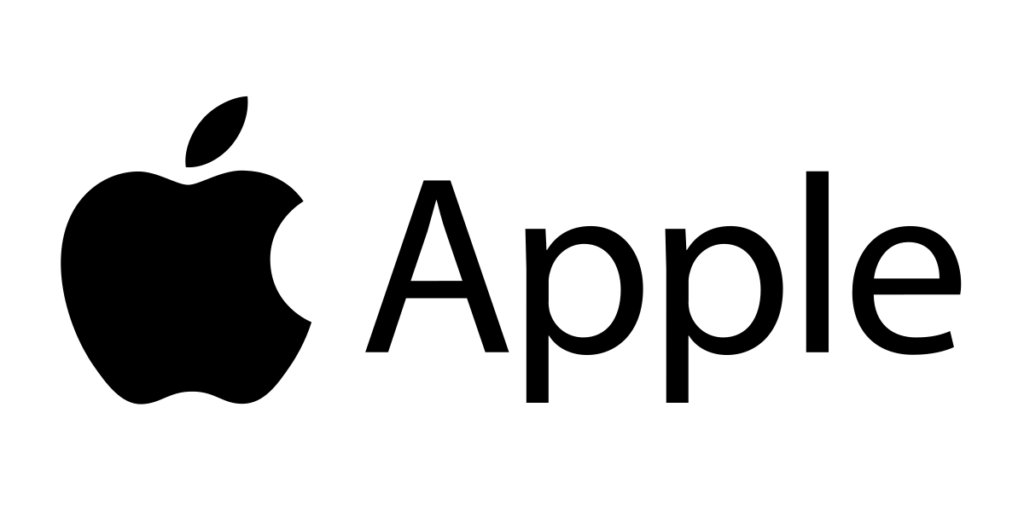Comprehensive Business Overview of Apple
Apple Inc. was founded by Steve Jobs, Steve Wozniak, and Ronald Wayne on April 1, 1976. It is now a global leader in technology and innovation. Apple’s inception was based on personal computers which later opened up as a powerhouse of consumer electronics, software, and services. Apple is headquartered in Cupertino, California. Apple has made a remarkable presence in the market with an overwhelming range of products such as iPhone, iPad, MacBook, and Apple Watch, synchronising with iOS, and macOS, and services like the App Store, iCloud, and Apple Music. Apple’s premium user experiences with enhanced integration of the ecosystem have made it emerge as a more valuable tech giant in the world. The most premium and luxury crowds prefer Apple Inc. for its security. Though it is a cluttered market company that gives direct head-on to Apple Inc., Samsung has an Android Ecosystem. It is a strong competitor to Apple products due to its omnipresence even with the non-premium crowd, especially students. Tim Cook took over from Steve Jobs as CEO owing to Steve’s serious illness. He focused on enhancing sustainability, privacy, and cutting-edge technology, such as artificial intelligence (AI) and augmented reality. Industries standards are set by the company’s hardware, software, and services which awestruck consumer loyalty worldwide.
If you are looking for Apple coupons and deals you can check here – https://www.99cashdeals.com/stores/apple-couponse-coupons
User Base Growth (2020-2024) of Apple Inc.
In 2020 advent of remort work emerged with growing lockdown concerns of COVID people went online mode from offline mode. Subscriptions for iCloud and Apple Music services saw a significant boost. Reported sales were 1.5 billion active devices. In 2021 iPhone 12 series saw a significant upgrade to 5G-enabled iPhones. This reported sales of 1.65 billion active devices. In 2022 devices active sales were reported to be 1.8 billion as a new Macbook with an M1 chip was launched. In 2023 active users increased to 1.95 billion active devices. In 2024 with the emergence of AI and AR/VR integration active users were reported to be 1.95 billion active devices.
| Year | Global Active Devices (Billion) | Key Drivers |
| 2020 | 1.5 | Increased adoption of iPhones, and robust sales of MacBooks and iPads during remote work surge (COVID-19). |
| 2021 | 1.65 | Expansion of 5G iPhones, strong performance of wearables like Apple Watch and AirPods. |
| 2022 | 1.8 | Sustained demand for iPhones, increased Mac adoption, and growth in services like iCloud and Apple Music. |
| 2023 | 1.95 | Product diversification, higher penetration in emerging markets, and growing ecosystem engagement. |
| 2024 | 2.1 (Projected) | Focus on sustainability, AR/VR innovations, and seamless integration of hardware and services. |
Key Operational Highlights of Apple Inc. (2020-2024)
2020 saw the advent of 5g technology with the launch of the iPhone 12 series. Remote work increases the demand for MacBooks and iPads. App Store, Apple Music, and iCloud reported a surplus subscription rate. The M1 chip was launched in 2021 which improved its performance and made it efficient for MacBooks and iMacs. Apple Watch Series 7 and AirPods Pro were new adopters to the family which set the trend of wireless earphones now termed true wireless earbuds. The launch of the Apple One bundle subscription saw a boost in the subscription rate. The iPhone 14 series was launched in 2022 and attracted subscribers with significant improvements in camera and processing capabilities, strengthening its market position. Vision Pro saw the advent of AR/VR headsets, in 2023 with market expansion in India and Southeast Asia. Apple TV+, Fitness+, and Apple Arcade saw new records in 2024. Its major operational focus was the integration of the AR/VR ecosystem into Vision Pro.
| Year | Key Operational Highlights | Description |
| 2020 | Launch of 5G iPhones (iPhone 12 series) | Marked Apple’s entry into 5G technology, setting a benchmark for smartphone innovation. |
| Surge in Remote Work-Related Product Demand | Increased sales of iPads and MacBooks due to the pandemic-driven remote work and learning requirements. | |
| Record Services Revenue | Strong growth in services like Apple Music, App Store, and iCloud. | |
| 2021 | Transition to M1 Chip | First Apple Silicon chips for Macs, enhancing performance and energy efficiency. |
| Wearables and Accessories | Growth Increased adoption of Apple Watch Series 7 and AirPods Pro. | |
| Expansion of Apple One Subscription | Bundled services offering, including Fitness+, Apple Music, and iCloud, gained traction. | |
| 2022 | Launch of iPhone 14 Series | Sustained leadership in the premium smartphone market. |
| Growth in AR and VR Initiatives | Investments in augmented reality (AR) and virtual reality (VR) technology, preparing for the Vision Pro. | |
| Commitment to Carbon Neutrality | Pledged to achieve carbon neutrality across its supply chain by 2030. | |
| 2023 | Vision Pro Announcement | Introduced AR/VR headset Vision Pro, emphasizing its focus on immersive technologies. |
| Expansion in Emerging Markets | Targeted affordable models and ecosystem bundles to penetrate new markets. | |
| Sustainability Milestones | Increased use of recycled materials and energy-efficient manufacturing processes. | |
| 2024 | Record Revenue from Services | Projected growth is driven by subscriptions, including Apple TV+, Fitness+, and Apple Arcade. |
| Launch of AR/VR Ecosystem | Release of Vision Pro and AR/VR-specific apps for broader adoption. | |
| Global Market Expansion | Strengthened presence in regions like India and Southeast Asia. |
Apple Inc. Financial Statistics (2020-2024)
In 2020, Apple reported $274.5 billion in revenue. This was due to an increase in demand for iPhones, iPads, and MacBooks as remote work and education surged during the pandemic. $57.4 billion was its net income with strong margins for premium-priced products and growth in services. With a market cap of $2 trillion, Apple became the first U.S. company. Apple in 2021 recorded a revenue of $365.8 billion, a 33% YoY growth fueled by the iPhone 13, M1-powered Macs, and services like Apple Music and iCloud. The net income reported was $94.7 billion. R&D spending was increased to $21.9 billion. In 2022, Revenue grew to $394.3 billion with the launch of the iPhone 14 accompanied Apple One subscription. The market capitalisation reported was $2.8 trillion. In 2023 slight decline of $385.8 billion was reported. Net income dropped to $91.3 billion. R&D spending was $28.7 billion. In 2024 projected revenue is $410.2 billion. The net income projected is of $95.0 billion. It is expected that market capitalisation will surpass $3 trillion.
| Year | Revenue (USD Billion) | Net Income (USD Billion) | R&D Spending (USD Billion) | Market Capitalization (USD Trillion) |
| 2020 | 274.5 | 57.4 | 18.8 | 2.1 |
| 2021 | 365.8 | 94.7 | 21.9 | 2.5 |
| 2022 | 394.3 | 99.8 | 26.3 | 2.8 |
| 2023 | 385.8 | 91.3 | 28.7 | 2.7 |
| 2024 | 410.2 (Projected) | 95.0 (Projected) | 30.5 (Projected) | 3.0 (Projected) |
Apple Inc. Product Range Expansion (2020-2024)
In 2020, 5g revolutionised the mobile industry with upgrades that became a necessary mandate for purchasing the newly launched iPhone 12 series. The M1 chip launch marked its transition from Intel chips to Apple Silicon M1. Apple Watch Series 6 saw the adoption of blood oxygen monitoring for fitness trends. By 2024 the demand for integrating AI in the iPhone 16 series grew. Apple may announce its prototype of electric vehicle car.
| Year | Product Category | Key Product | Launches/UpdatesHighlights |
| 2020 | Smartphones | iPhone 12 Series | 5G support, A14 Bionic chip, Ceramic Shield durability. |
| Tablets | iPad Air (4th Gen) | A14 Bionic, USB-C, and an all-screen design. | |
| Wearables | Apple Watch Series 6, SE | Blood oxygen monitoring, lower-cost SE variant. | |
| Macs | MacBook Air, MacBook Pro, Mac Mini (M1 Chip) | Introduction of Apple Silicon M1 processors. | |
| 2021 | Smartphones | iPhone 13 Series | Cinematic Mode, A15 Bionic chip, improved battery life. |
| Tablets | iPad Pro (M1 Chip), iPad Mini (6th Gen) | M1 performance in tablets, 5G capabilities. | |
| Wearables | Apple Watch Series 7 | Larger display, faster charging, and new colour options. | |
| Audio | AirPods 3 | Spatial Audio, improved battery life. | |
| 2022 | Smartphones | iPhone 14 and 14 Pro Series | Dynamic Island on Pro models, Emergency SOS via Satellite. |
| Wearables | Apple Watch Ultra, Series 8 | Rugged design (Ultra), temperature sensing (Series 8). | |
| AR/VR | Preview of Vision Pro headset | First glimpse of Apple’s AR/VR ambitions | |
| Macs | Mac Studio, Studio Display | High-performance desktop, 5K Retina display. | |
| 2023 | Smartphones | iPhone 15 and 15 Pro Series | USB-C port, Titanium design on Pro models, enhanced camera features. |
| AR/VR | Vision Pro | First AR/VR headset, Spatial computing ecosystem | |
| Macs | 15-inch MacBook Air | Larger screen option, M2 chip integration. | |
| Software | iOS 17, macOS Sonoma | Enhanced personalization, productivity, and AI-powered features. | |
| 2024 | Smartphones (Projected) | iPhone 16 Series | Further AI integration, and advanced camera enhancements. |
| AR/VR (Projected) | Vision Pro | Ecosystem AppsExpansion of apps and tools for AR/VR environments. | |
| Wearables (Projected) | Apple Watch Series 10 | A major redesign and expanded health monitoring features. | |
| Electric Vehicle (Rumored) | Apple Car | ConceptPotential entry into the electric vehicle market. |
Apple Inc. Social Media Following (2020-2024)
In 2020, the focus of social media was consistent updates and engaging visuals. Live-stream launches on YouTube became add-ons for exclusive sales purposes. In 2021, Twitter polls and live event discussions increased user engagement. Real-life applications streamed through Instagram reels and stories enhanced user interaction. In 2022, YouTube and Instagram engagement increased with the launch of the iPhone 14 and Vision Pro. In 2023 Vision Pro was promoted by the Social media platform. B2B partnerships were boosted on LinkedIn.
| Year | Platform | Followers (Millions) | Key Highlights |
| 2020 | 12.5 | Focused on product announcements and customer engagement. | |
| 5.4 | Regular updates on events like WWDC, new launches, and key features. | ||
| 23.0 | Leveraged high-quality visuals showcasing product aesthetics. | ||
| YouTube | 10.2 | Hosted live-streamed product launches and tutorials. | |
| 6.8 | Targeted professional audience with insights into innovation and work culture. | ||
| 2021 | 14.0 | Expanded focus on AR-powered ads and promotional campaigns. | |
| Twitter | 6.1 | Introduced interactive polls and live event discussions to increase engagement. | |
| 26.5 | Highlighted user-generated content and product reviews to build community. | ||
| YouTube | 11.8 | Delivered high-quality videos on product features and behind-the-scenes insights. | |
7.5 | Increased hiring campaigns and B2B content targeted at enterprises | ||
| 2022 | 16.2 | Launched campaigns for iPhone 14 and Mac Studio, driving significant engagement. | |
| 6.8 | Focused on event hashtags and user engagement during product launches. | ||
| 30.0 | Amplified reach with reels and stories showcasing product use cases | ||
| YouTube | 13.5 | Engaged audience with AR/VR demonstrations and tutorials for new products. | |
| 8.2 | Shared innovation case studies and sustainable practices to engage professionals. | ||
| 7.3 | Continued using live updates and polls for event-related engagement. | ||
| 33.5 | Showcased Vision Pro and sustainability initiatives using reels and videos | ||
| YouTube | 15.0 | Live-streamed WWDC and Vision Pro demonstrations, | |
| 9.1 | Focused on enterprise solutions and partnerships for the Vision Pro ecosystem. | ||
| 2024 | Facebook (Proj.) | 20.0 | Expected to increase engagement with the launch of new product lines and services. |
| Twitter (Proj.) | 8.0 | Likely to expand reach with real-time updates and influencer collaborations. | |
| Instagram (Proj.) | 37.0 | Anticipated growth through campaigns showcasing product innovations and AI tech. | |
| YouTube (Proj.) | 16.8 | Predicted growth is driven by exclusive content for AR/VR and AI-powered devices. | |
| LinkedIn (Proj.) | 10.5 | Expected to grow with targeted B2B marketing and sustainability-driven initiatives. |
Demographics of Apple Inc Customers (2020-2024)
North America dominates Apple’s largest market share with high-income professionals and hybrid workers. Sustainability and innovative products appeal to eco-conscious and tech-savvy consumers. In Asia Pacific, the iPhone SE saw a boom in India and China. Other regions saw the use of Apple Pay and iCloud.
| Year | Age Group | Income Segment | Geographic Distribution | Key Customer Segments |
| 2020 | 25-35 (60%), 36-50 (30%) | Middle-income (65%), Low-income (25%) | Urban (80%), Semi-Urban (15%), Rural (5%) | Vehicle owners, young professionals |
| 2021 | 25-35 (55%), 36-50 (35%) | Middle-income (70%), Low-income (20%) | Urban (75%), Semi-Urban (20%), Rural (5%) | Health-conscious individuals, millennials |
| 2022 | 25-40 (60%), 36-50 (30%) | Middle-income (72%), High-income (15%) | Urban (70%), Semi-Urban (25%), Rural (5%) | Digital-savvy professionals, frequent travelers |
| 2023 | 25-40 (65%), 36-50 (25%) | Middle-income (68%), High-income (20%) | Urban (65%), Semi-Urban (30%), Rural (5%) | Tech-savvy youth, SMEs, gig economy workers |
| 2024 | 25-40 (68%), 36-50 (22%) | Middle-income (65%), High-income (25%) | Urban (60%), Semi-Urban (35%), Rural (5%) | Digital-first customers, hybrid workers |







